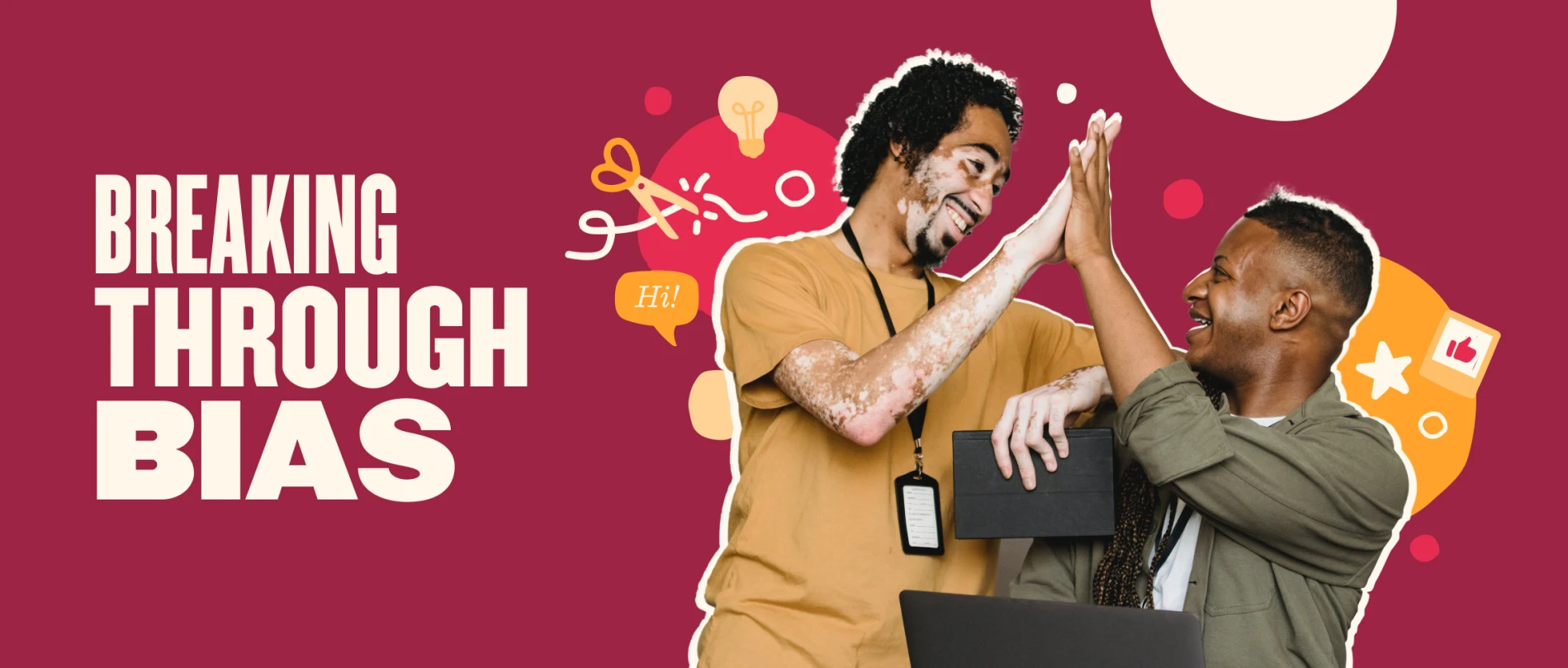LGBTQ+ rights have come a long way in recent years. But discrimination is still a part of our society and a part of the workplace. LGBTQ+ employees report substantial barriers to advancement. Many believe they have to outperform non-LGBTQ+ colleagues to gain recognition or provide additional evidence of their competence to get a promotion or raise. In addition, trans and non-binary folks are far more likely than cisgender people (those who identify with the gender assigned at birth) to be in entry-level positions.
Unconscious bias, also known as implicit bias, is one way to explain this professional roadblock. We all have underlying attitudes and stereotypes that we unconsciously associate with another person or group of people. These underlying attitudes affect how we engage and understand that person or group—whether we’re aware of it or not.
This unconscious bias, if left unchecked, will eat away at the foundation of an effective performance review process—its objectivity.
Here are three tips for reducing unconscious bias that HR can deploy company-wide.
1. Interrupt bias with inclusivity training for all employees
Bias itself is hard to eliminate, which is why modern companies instead try to interrupt bias. Interrupting bias involves making your managers and employees (but especially your managers) aware of implicit bias and taking steps to make sure it doesn’t get in the way of job performance or career opportunities. In meetings, for example, straight men are more likely to dominate the conversation, and women are more likely to be interrupted while speaking. Or, when projects are assigned, high-profile projects (the ones that lead to networking and promotion opportunities) are disproportionately doled out to straight white men. By allowing this dynamic, managers may be unintentionally setting certain employees up for success while inhibiting the passion or confidence of others. To interrupt this bias, managers must first be aware of how this dynamic can negatively affect people.
Workshops on inclusive-language training and interrupting bias can be eye-opening and facilitate conversations at work about what needs to be changed and what inclusion means. It can clue employees into their behavior and help them see the world through someone else’s lens. It might not be comfortable to talk about bias, but employees need to be aware of it to combat it.
2. Reduce the “onlyness” experienced by LGBTQ+ employees
When a person is the only one in a group setting with their gender identity, sexual orientation, or race, it can be incredibly isolating. Research from McKinsey highlights that when a person experiences this kind of “onlyness” across multiple dimensions, the stress and pressure to perform only increases (LGBTQ+ women of color, for example, are eight times more likely than straight white men to report “onlyness”).
Psychological safety significantly impacts job performance. People who are free to be themselves are happier, more productive, and even more willing to take creative risks. There’s power in numbers, and reducing the isolating feeling of being the only one at a company can go a long way in helping LGBTQ+ employees feel safe to try new initiatives, speak up and take risks.
Creating a more diverse pipeline and hiring diverse candidates will help alleviate this feeling of “onlyness.” To avoid implicit bias in the hiring phase, consider adopting blind resume screening by removing names and gender.
3. Focus on performance, not personality
Reviews have more impact when you focus on the performance side and leave personality out of it. When asking employees to evaluate coworkers or asking managers to review their team members, HR should pose direct questions and get specific about what metrics they want employees to consider. Ask skills-based questions that allow for an impartial review process that gives all employees a chance to stand out and feel appreciated.
LGBTQ+ employees also might not feel so comfortable talking themselves up or advocating for themselves. When it comes to writing self-evaluations, your people’s responses probably run the gamut from “everything I touch turns to gold” to “nothing I do is ever good enough.” Some people find it easier to highlight their strengths or turn any weakness into a positive, while others may find this kind of self-aggrandizement a bit foreign. Counter that by giving all employees the tools to evaluate their own performance, whether that’s examples of what to include or tips on how to approach performance reviews.
Recommended For Further Reading
Interrupting bias at every opportunity
No one is immune from implicit bias. We form quick associations as a means of survival. We gravitate towards people who are similar to us and shy away from those who are different. We’re influenced by our surroundings, the opinions of neighbors, and the media, which has often depicted minorities and LGBTQ+ people in a negative light. Implicit bias at work is especially vicious as it affects recruitment, hiring, promotions, retention, and evaluations—and can easily go unnoticed.
According to Harvard University researcher Mahzarin Banaji: “Most of us believe that we are ethical and unbiased. We imagine we’re good decision-makers, able to objectively size up a job candidate…and reach a fair and rational conclusion that’s in our, and our organization’s, best interests. But more than two decades of research confirms that, in reality, most of us fall woefully short of our inflated self-perception.”
As we continue to become better humans, better colleagues, and better allies to each other, we will be hit with some hard truths along the way. Admitting is the first step. The next step is up to you.


